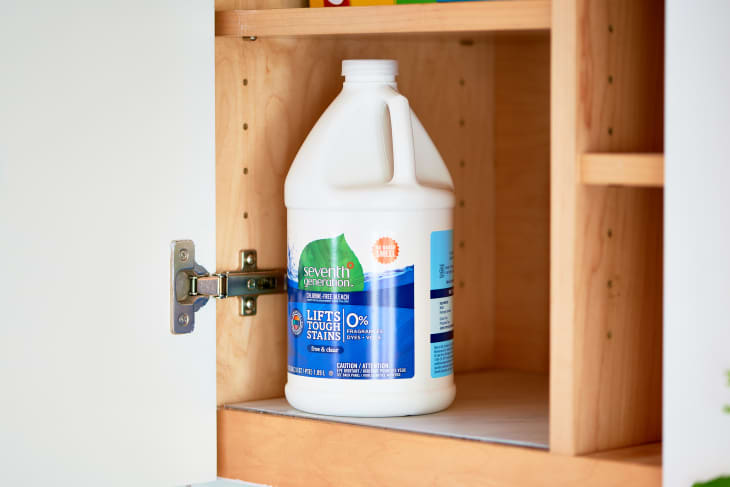The Best Ways to Store Bleach
For all its effectiveness, bleach is actually fairly finicky. Unlike vinegar, which can sit on a shelf basically indefinitely, bleach has a very short shelf life. “Bleach maintains its full strength and efficacy for between three and six months. After that, it loses about 20 percent of its strength per year,” says Nancy Bock, senior vice president of education at the American Cleaning Institute.
Once bleach starts to degrade, you can’t be totally sure that it will kill the harmful bacteria you’re targeting or remove the stains you’re hoping to lift. Beyond that, proper storage is key not just for effective cleaning, but also for safety, as it can be a hazard to kids and pets.
Here are the best things you can do when it comes to storing bleach.
1. Keep it cool (but not too cool).
“The ideal storage temperature for bleach is between 50 and 70°F. If it’s stored in hotter temperatures, it loses its strength even faster,” says Bock. The best spot to store bleach is in a cool, dry area away from sunlight.
2. Keep it out of reach.
Household bleach can be very harmful for both children and pets. Make sure you keep the bottle on a high shelf or locked cabinet and put it back right away after using it. Also, keep kids and pets away from the kitchen if you’re cleaning with bleach. “When children and pets come into contact with freshly bleached surfaces — such as floors — chemicals may be ingested by inadvertent touch to their mouth or even their eyes,” says Bock.
3. Keep it out of the way.
“Because the containers can sometimes be a bit fragile, keep them out of the way so that the bottles aren’t inadvertently kicked or knocked off the shelves,” says Bock. You may even want to store the bleach containers on a material like a piece of old linoleum, so a potential leak doesn’t ruin your nice tile or shelving.
4. Don’t decant it.
While you may think that bleach would look nicer in a glass jar or sprayer, the general rule with cleaning products is to keep them in their original packaging, so that you can quickly access the product labels and warnings. And since you should never mix bleach with other cleaners — especially ones containing ammonia, because they can produce a potentially lethal reaction — you should never reuse a container from another cleaner to store bleach, either.
5. Label it.
When you open a bottle of bleach, use a permanent marker to label it with the date. “Typically after opening a one-gallon container of bleach, it should be used up within three months or disposed due to its inability to render potential biohazards neutral,” says Bock. Labeling the bottle with a clear date will help you keep it straight.
How to Dispose of Bleach
If you have a small quantity of ineffective bleach, you can pour it down the sink or into the toilet (it breaks down to salt and water, after all). Or, if you have a lot of it, contact a household waste disposal company to dispose of it.
